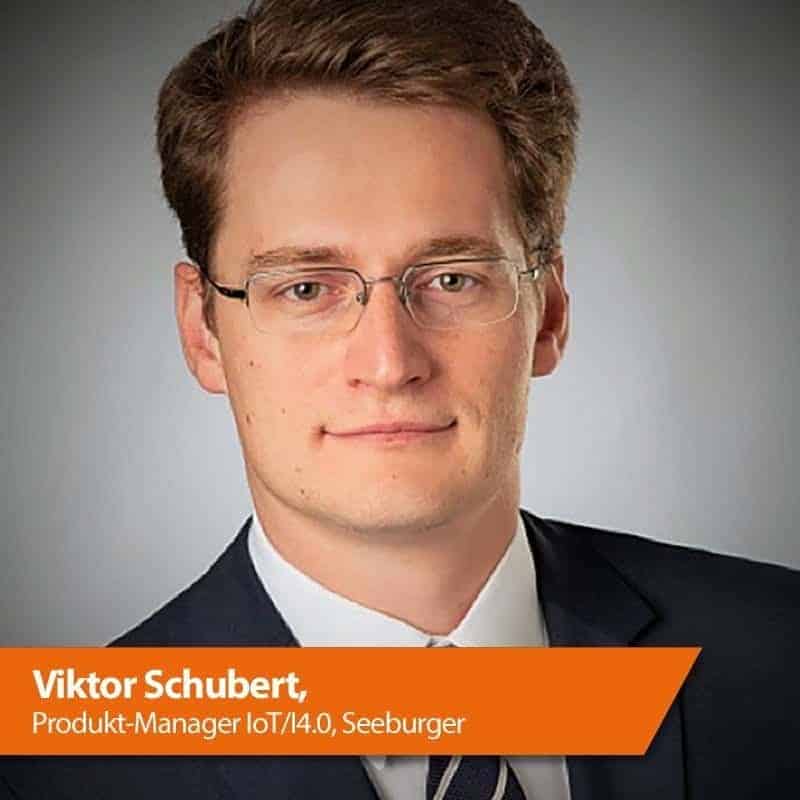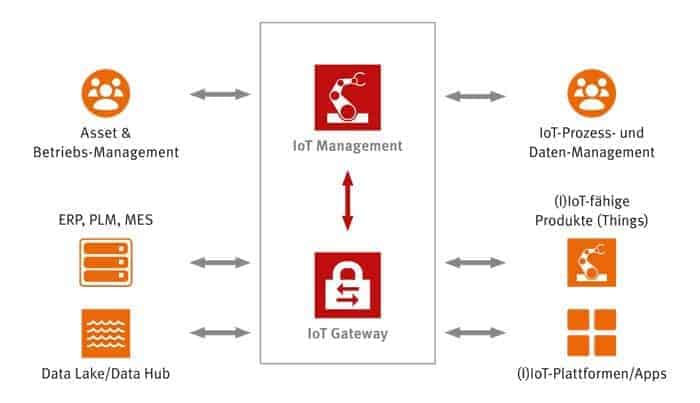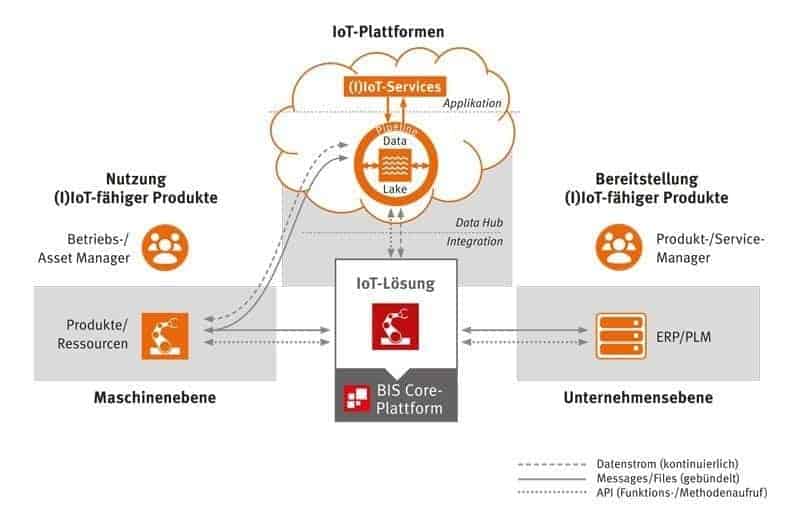Fitness cure "Industry 4.0


Although the Internet of Things first saw the light of day around 20 years ago, IoT projects have only really taken off in the last three to five years. This upward trend has been fueled by new and stable technologies and standards on the one hand, and by efforts to increase value creation through digitization and to better connect manufacturers, partners, customers and products on the other.
On top of this, new or modified business models, very often with a stringent service-oriented focus, offer immense potential to build on what has already been achieved in business terms and to differentiate from competitors.
What is certain is that IoT projects will continue to grow significantly in the foreseeable future. And much more so than has been the case in the past. Not only among large companies, but also in the broad midmarket - across all sectors and, obviously, increasingly in the manufacturing industry or in manufacturing-related industries.
For example, this year's investment survey by the German-speaking SAP User Association DSAG showed that 45 percent of the SAP customers surveyed are focusing on IoT as part of their digitization projects and are spending money on it, which means second place in this digitization ranking behind Big Data (with around 60 percent).
As already mentioned, networking and integration are key issues in Industrial IoT/Industry 4.0 (IIoT for short), as they are in IoT. Both internally and across company boundaries.
 To put it bluntly: without networking and integration, (I)IoT projects have feet of clay. After all, (I)IoT is about linking the physical world of "things", i.e. products and resources such as machines and plants, and the engineering and operating data available from them, with the digital world of IT, i.e. with applications for controlling business processes, cloud services and new data-driven services, in a beneficial way. In short, to realize business integration for IoT.
To put it bluntly: without networking and integration, (I)IoT projects have feet of clay. After all, (I)IoT is about linking the physical world of "things", i.e. products and resources such as machines and plants, and the engineering and operating data available from them, with the digital world of IT, i.e. with applications for controlling business processes, cloud services and new data-driven services, in a beneficial way. In short, to realize business integration for IoT.
In connection with IoT, three topics in particular pose key challenges that must be mastered: first, consideration of standards and reference models for end-to-end interoperability; second, flexibility and scalability in the face of constantly growing requirements; and third, security to prevent attacks or damage and to eliminate vulnerabilities.
At first glance, B2B integration, EDI integration or SAP integration have little in common with (I)IoT integration for outsiders. But at second glance, they have a lot in common.
Thus, IoT integration is also about the tasks of data connectivity, translation of data structures (mapping) and data transmission - and this even, at least in part, according to the same technical standards, such as XML.
Against this background, it makes more than sense to use business integration platforms both for B2B integration or for the integration of non-SAP and SAP systems as well as for integration scenarios occurring in the IoT environment.

In this context, such a platform not only represents a kind of data hub that ensures data transfer, allocation and linking between different components in the form of middleware, but also acts as a basis and instrument itself for complex integration scenarios in the (I)IoT environment. For example, in the integration of special IoT platforms such as MindSphere (Siemens), ThingWorx (PTC) or platforms such as SAP Leonardo including their underlying data hub infrastructures.
These in turn have to interact with further gateways at the process and machine level or corresponding applications and backbone systems (ERP/PLM).
In B2B, for example, there is increasing demand for tracking and monitoring serialized products across the entire supply chain, including the collection of condition and environmental data.
In addition to the analysis capability thus achieved, the ability to react and act within the company and between business partners must also be efficiently ensured through the connection of further systems and applications (see also the practical example "DB Cargo").
More than a data hub
Middleware solutions with dedicated functions for IoT integration are required to integrate IoT-capable products, including the necessary management and service platforms, into internal and inter-company business processes.
The Seeburger Business Integration Suite covers all required IoT/integration scenarios with its IoT/Industry 4.0 Solution. It consists of powerful solutions that can be obtained on-premises as well as from the cloud.
In addition, it is not only aimed at companies that want to optimize their corporate IT or integrate services offered via IoT, but also at manufacturers that want to make their own products IoT-capable in the field in order to offer value-added services based on them.
Ultimately, the goal of IoT is to convert data into added value, such as increasing internal productivity through shop-floor integration (track-and-trace functionality of product and process data, RFID-based production control, or human-technology interaction).
Or to improve customer value and customer integration via the IoT capability of products (for example, through condition/usage data processing, feedback-based service processing, RTLS/real-time location systems).
Based on practical requirements (best practices), an IoT integration platform is made up of building blocks or components. On the one hand, there is an IoT gateway that handles the various integration tasks and provides security functionality at the same time.
On the other hand, an IoT management component with a web-based interface, for example for asset and process data management, configuration, process control or monitoring and analysis.
Which is also realized in Seeburger's BIS IoT/Industry 4.0 Solution. The IoT gateway component ensures the integration of IoT devices (assets). And this via OPC UA or MQTT or also API integration of proprietary (device) interfaces (HTTP, Rest, Soap, XML RPC, Json and others).
Conclusion
Anyone tackling IoT projects as part of digitization projects will be confronted with the topics of end-to-end networking and integration at an early stage. In particular, this involves integrating IoT-enabled products or resources into business processes and participating systems.
This is the only way to build and offer digital services. Business integration platforms as hybrid middleware solutions with a broad range of functions not only provide valuable services here, but also represent an important basis for providing the necessary infrastructure in IoT projects, including information logistics and interoperability, which covers both internal and external scenarios.
IoT integration in practice at DB Cargo
Optimized logistics processes and customer services: With the development of innovative and sustainable logistics solutions, DB Cargo is setting new standards in logistics and digitalization in rail freight transport.
The pilot project "Wagon Intelligence" aims to improve dispatching forecasts, increase wagon utilization, reduce wagon turnaround times and improve customer information.
To monitor the wagon fleet, wagons are equipped with modern radio and sensor technology. In addition to device information, location and movement status, mileage and speed, charging status and impacts are recorded.

Seeburger's BIS API solution, as the central data hub of the DB Cargo Logistics network, provides a REST web service for receiving raw sensor data and thus controls a three-digit million value of data records per year in the future.
Sensor data from wagons in motion is sent several times an hour (once a day if stationary), converted, consolidated and forwarded to an internal dispatching system.
In the further course of the project, integration mechanisms will be established via the BIS for the collection of additional sensor data on turning trips as well as entries and exits in "geofences" and the aggregation and provision of these in a data analytics environment, which will form the basis of new digital customer services.





